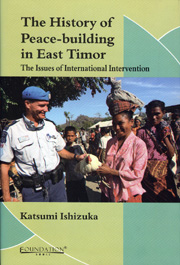Conclusion
Published online by Cambridge University Press: 26 October 2011
Summary
A Perspective on History and Theory
This book has dealt extensively with the history of East Timor and has analysed the peace-building process of East Timor from a variety of perspectives. One of the most significant features of the book is that it witnessed the fact that East Timor, which was merely a tiny Portuguese colony in Southeast Asia, has received massive support from the international community since 1999, and has accepted one of the largest UN peacekeeping operations in UN history. In this sense, East Timor is regarded as one of the most significant examples for those people who support the concepts of political freedom and selfdetermination of ethnically marginalised people. The book also indicated that a humanitarian crisis in East Timor after the referendum in September 1999 was solved by the international commitment, leading to the creation of INTERFET and UNTAET.
However, it has to be accepted that there was considerable passivity displayed by the international community towards East Timor on the question of human rights abuses committed by the TNI during the Cold War era. Although East Timor was always on the UN agenda during this period, one could witness the gradual decline of interest among UN member states. Political realism was the policy adopted towards East Timor by the superpowers and its neighbouring states which always prioritised their national interests, namely their diplomatic relationship with Indonesia and regional stability for their economic interests.
- Type
- Chapter
- Information
- The History of Peace-Building in East TimorThe Issues of International Intervention, pp. 250 - 258Publisher: Foundation BooksPrint publication year: 2010

